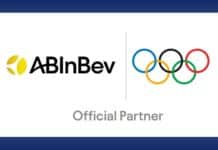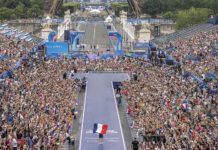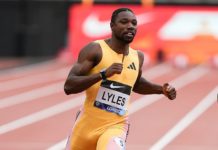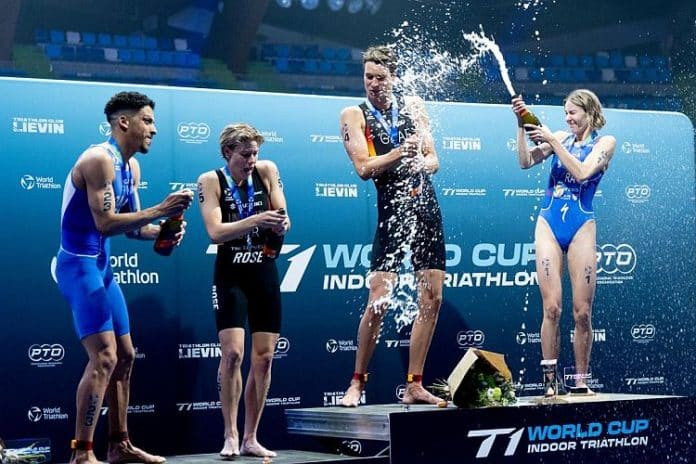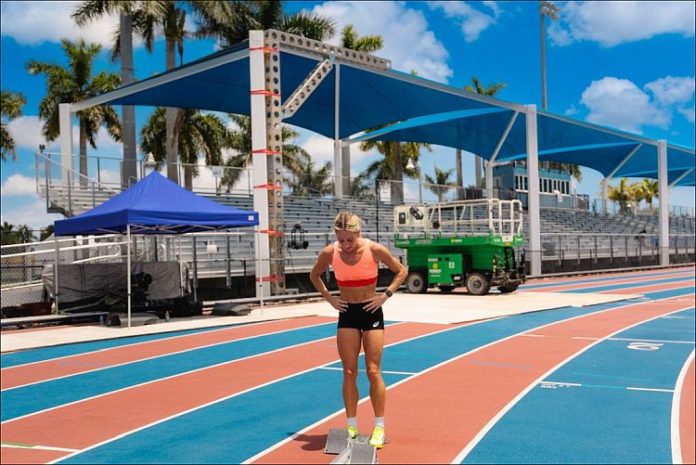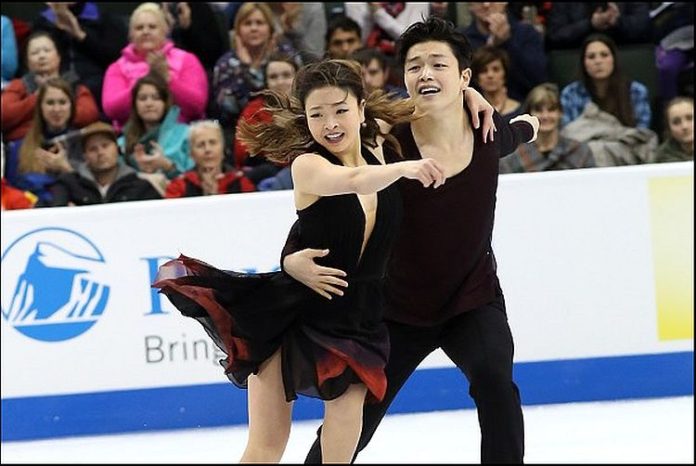★ The Sports Examiner: Chronicling the key competitive, economic and political forces shaping elite sport and the Olympic Movement.★
★ To get the daily Sports Examiner Recap by e-mail: sign up here! ★
≡ THE LA28 QUOTA LOSSES ≡
While modern pentathlon survived once again and continues on the Olympic program for the 2028 Los Angeles Games, the sport saw the number of athletes allowed to compete in 2028 shaved from 72 to 64.
Among the 31 sports on the continuing Olympic program for 2028, only surfing (48) is smaller, and pentathlon has been on the program since 1912.
Why?
Union Internationale de Pentathlon Moderne (UIPM) Secretary General Shiny Fang (CHN) offered an explanation in a Web post on Thursday, providing a unique look into the calculus of the International Olympic Committee that ended up with the loss of eight athletes for the sport.
In pertinent part:
● “How do we feel?
“Shocked, yes – we did everything that the IOC wished us to do in reforming our sport to be more compatible with the future direction of the Olympic Games, and even went beyond expectations – although we do understand that the numbers that will provide a full justification for the change take time to achieve.
“Sad, yes – because the decision will have a negative impact on our development programme for new countries, with only 64 pentathletes able to compete in LA28 (although we hope for many more in future Games).
“Unfairly treated, yes – Pentathlon was already the sport with the least medals and the lowest athlete quota based on Paris 2024 numbers.”
● “But why did this happen?
“It is necessary to disclose the reasons, and we urge the whole community to work with us to enhance the position of Pentathlon within the Olympic Games!
“The IOC conducts an evaluation entitled ‘Games Time Data Collection’ for each edition of the Olympic Games, and then uses the data to make decisions about future programmes. The list of indicators for Paris 24 comprised:
“1. Viewer hours
“2. Total maximum audience
“3. Average audience
“4. Digital viewership
“5. Number of internet searches
“6. Page views on most popular websites
“7. Unique visitors on most popular websites
“8. Social media sharing of articles
“9. Social media conversations
“10. IF-owned social media performance
”11. Page views on IOC website and mobile app
“12. Favorite sports among general public and youth
“13. Percentage of available tickets sold
“14. Number of press articles”
This may be the first time that all of the evaluation categories used by the IOC have been publicly disclosed.
● Fang noted that the small size of the sport has worked against it in the IOC’s metrics:
“With the exception of four indicators (3, 10, 12 and 13), all the results are highly reliant on the number of days and hours allocated to each sport during the Olympic period, as well as the number of medals. The four mentioned indicators provided a fairer assessment of performance, in some cases looking at averages, and in other cases with metrics applied to the relative size of the sport and federation.
“Unfortunately, with only two medals across four days of the Games, and only three broadcasting days, Pentathlon is not able to compete with the vast majority of sports across the other 10 indicators.”
So, how did pentathlon do? Fang explained:
● “For No.3, the average TV audience, our Women’s Final day had a little more than the median (34.016 million), reaching 34.347 million, with the Men’s Final achieving 22.330 million, which was also way above the minimum (5.355 million).”
● “For No.10, IF-owned social media performance, we reached exactly the median level metric of 218 across our own platforms, while the minimum was 84.”
● “For No.12, favorite sport among public and youth, we scored slightly higher (5.48) than the minimum (5.26). It clearly tells that we need to attract more youth and create more public awareness, while we know that we are going in the correct direction with our innovations.”
● “For No.13, percentage of available tickets sold, this was the best result for our sport, since we reached almost the top performance with 98.13%. The maximum was 99.28% and the minimum was 72.92%.”
Fang asked for help from athletes, coaches and fans to help the sport improve its standing.
Observed: It should first be noted that this kind of disclosure is helpful, as it offers much more detail than has been seen previously into the IOC’s review of sports on the program.
There is no magic bullet, and while the UIPM has promoted the inclusion of obstacle racing in place of equestrian, part of its appeal in Paris was being paired with equestrian, held at the picturesque gardens of Versailles. That’s over.
However, new UIPM President Rob Stull (USA) posted a story on Tuesday (29th), praising the work of the Budapest organizers of the last UIPM World Cup, noting:
“In case you missed it, UIPM 2025 Pentathlon World Cup Budapest was an extraordinary spectacle. Having looked at venue options to accommodate the new format, and considered the reliability of the weather in Hungary in April, they took a chance on a primarily indoor competition and it paid off spectacularly. …
“I’ve always felt that our sport has the potential to be more appealing to audiences, and in turn to broadcasters and sponsors. This competition marked the beginning of a new chapter of commercial potential in Modern Pentathlon.”
In a parallel with a sport on the rise in the Olympic Movement, triathlon is also noodling with indoor competitions, with a temporary pool and cycling and running on an indoor, 200 m track, most recently a T1 Indoor Triathlon World Cup at the Arena Stade Couvert in Lievin (FRA) that drew 5,000 spectators!
The format was short: 200 m swim, 2.8 km bike and 1,000 m run, with Henry Graf (GER) winning the men’s race in 9:36 and Olympic champ Cassandre Beaugrand (FRA) winning the women’s final in 10:19.
Is this the future for pentathlon, which is really a four-event program of fencing, obstacle, swimming and the Laser Run?
An indoor competition would create almost infinite possibilities for the sport to be held in arenas anywhere, especially where an indoor track exists. Bring in a temporary pool – probably 25 m – and there should be room for everything. A convention center would also work.
And like triathlon, an indoor format can coexist with an outdoor format: triathlon has Sprint, Olympic, 70.3, T100, Ironman and other competition events, all of which seem to coexist reasonably well.
Stull, Fang and the UIPM are going to have to get creative and re-think the sport of it is going to have any Olympic future. Perhaps their Budapest experience and seeing what triathlon has done might be a way forward.
¶
★ Receive our exclusive, weekday TSX Recap by e-mail by clicking here.
★ Sign up a friend to receive the TSX Recap by clicking here.
★ Please consider a donation here to keep this site going.
For our updated, 694-event International Sports Calendar for 2025 and beyond, by date and by sport, click here!


